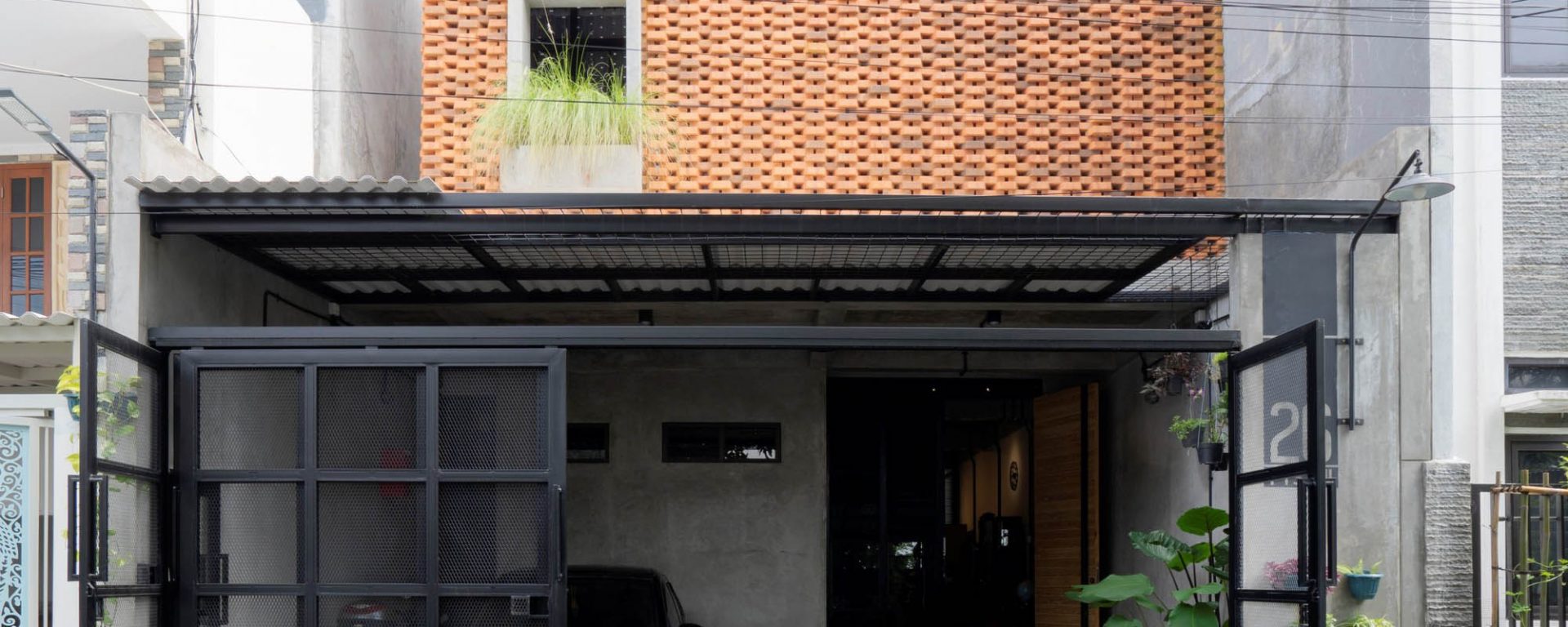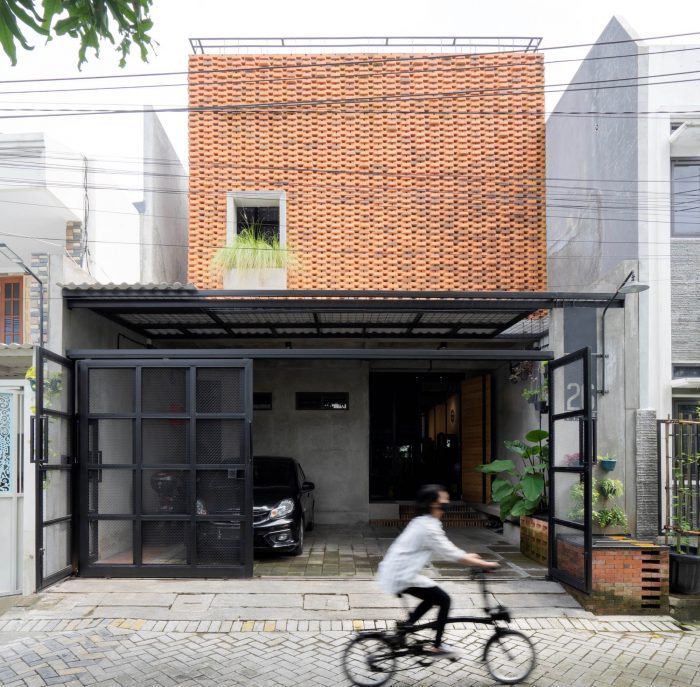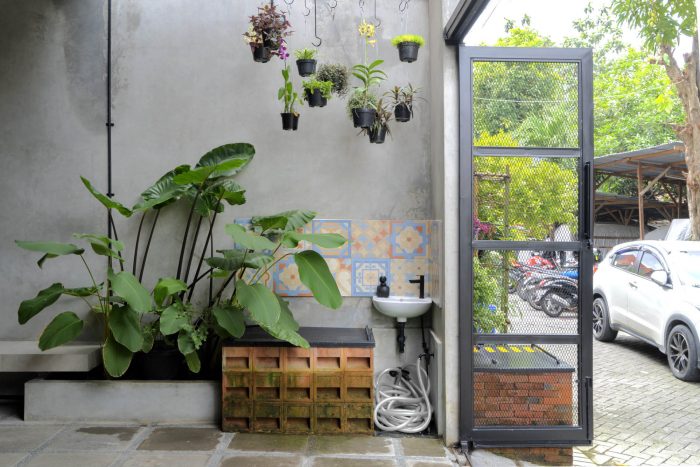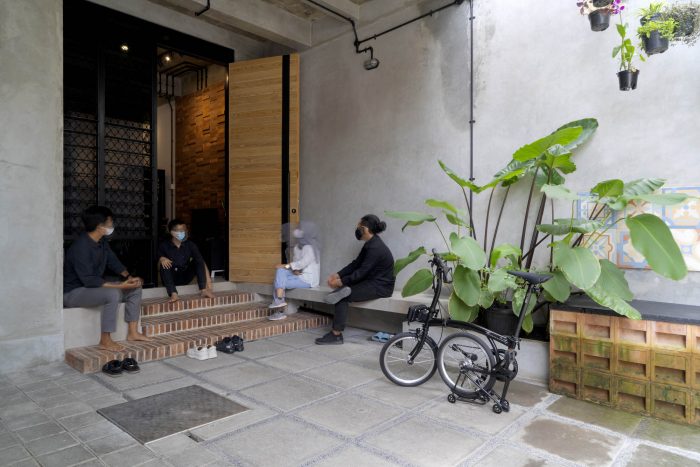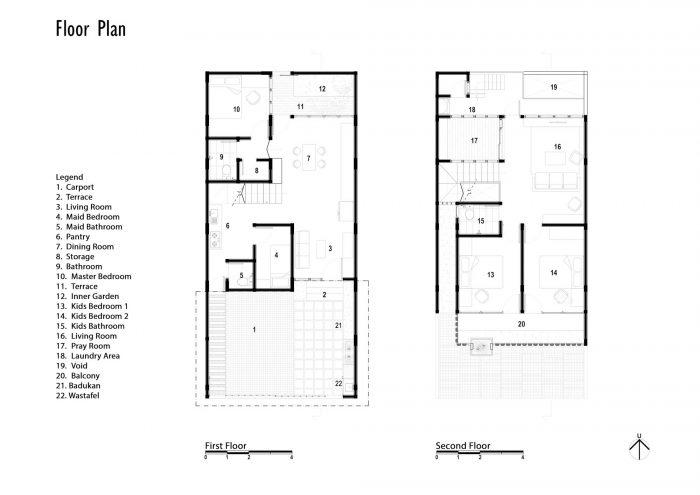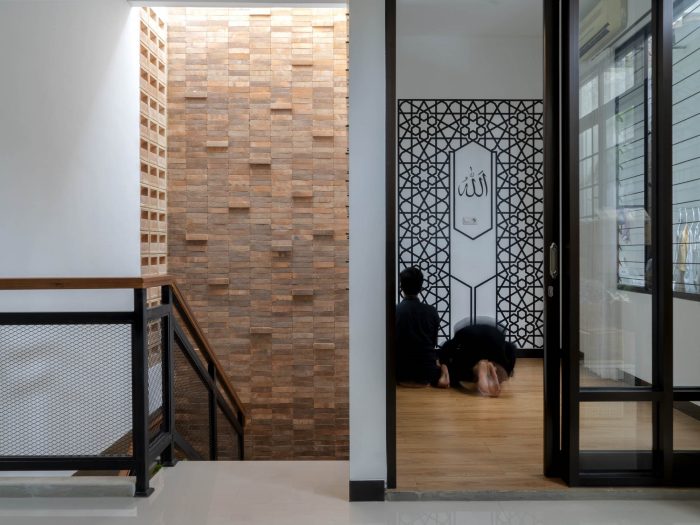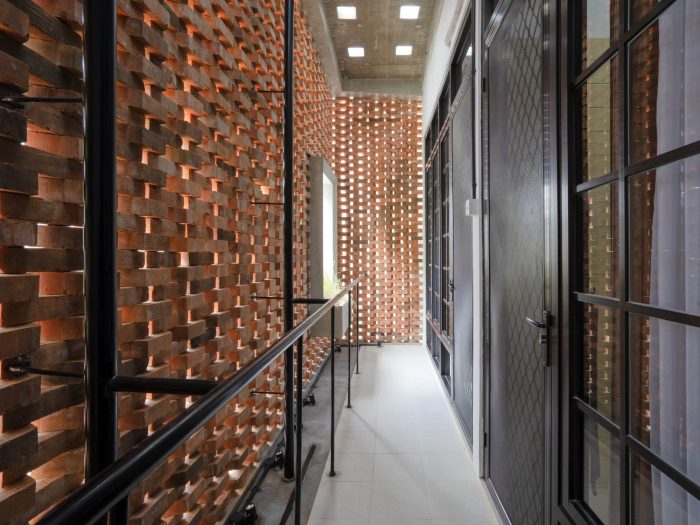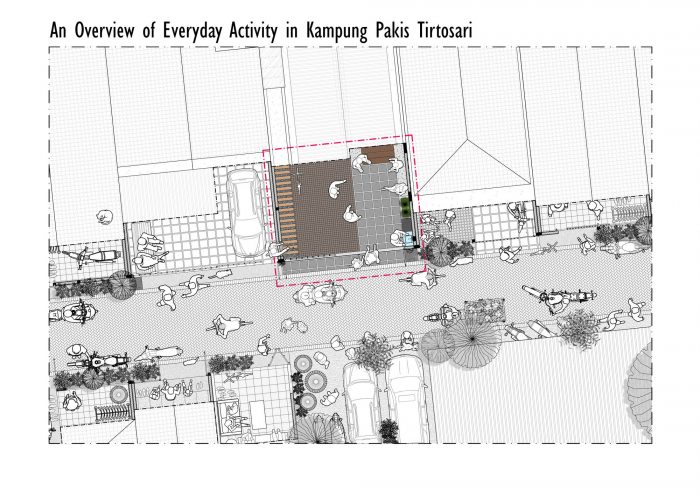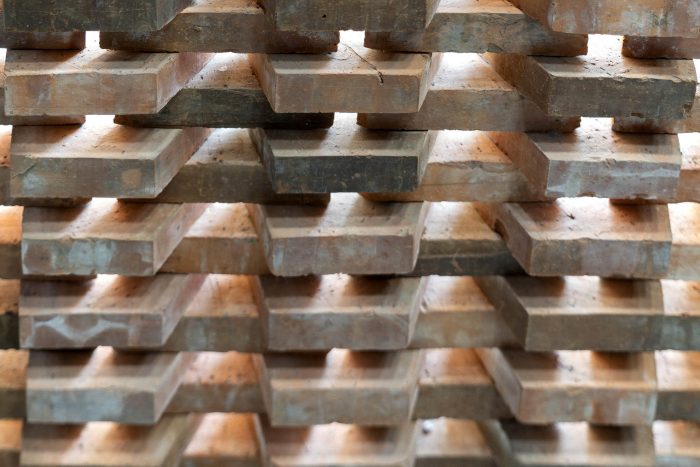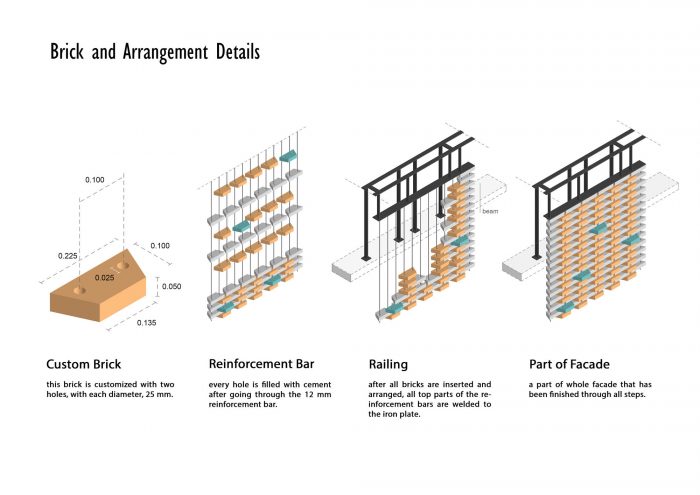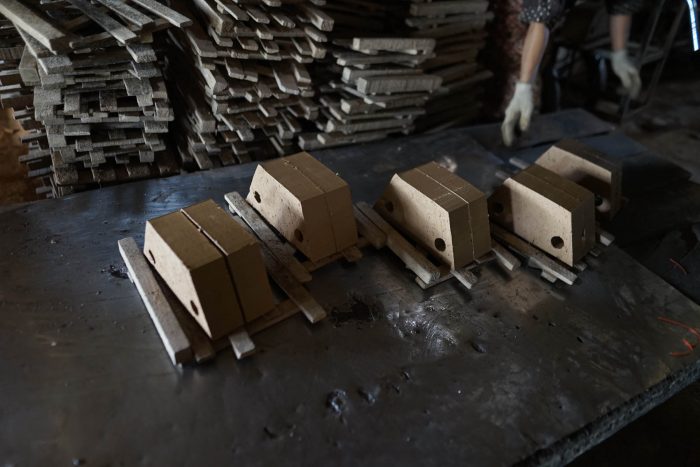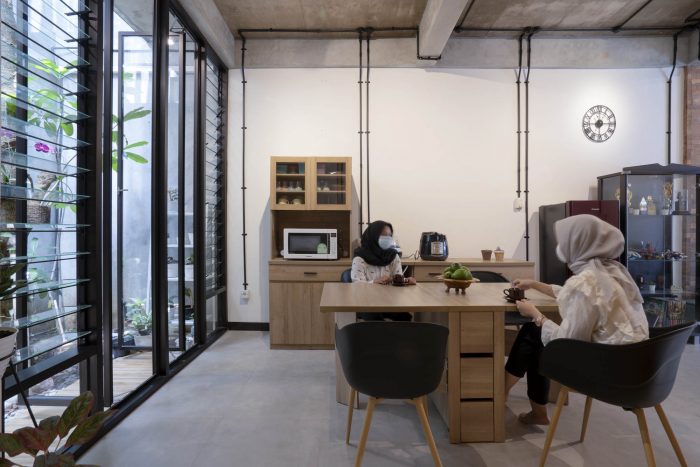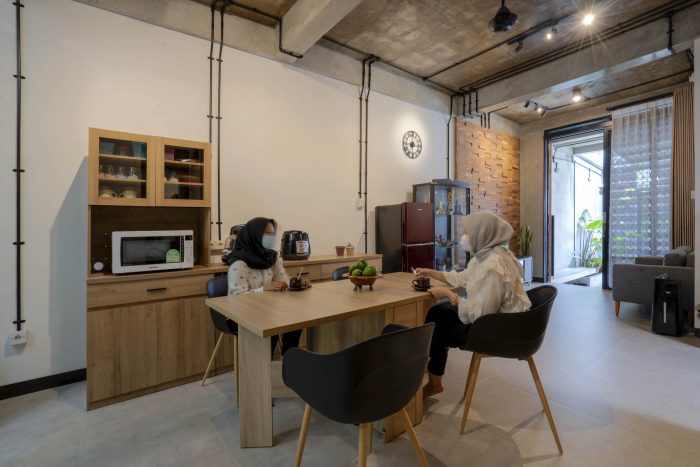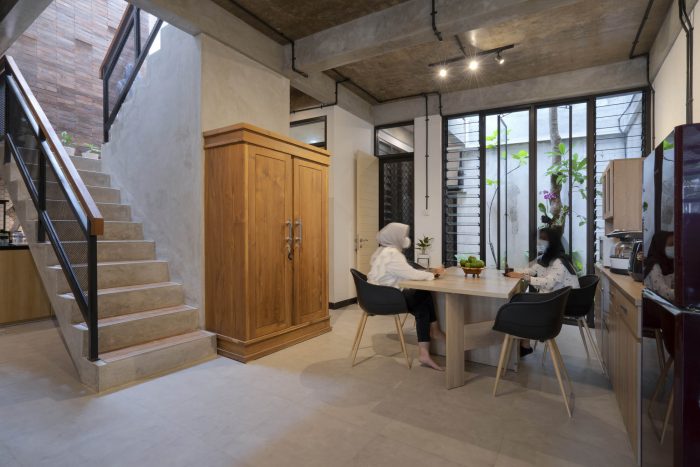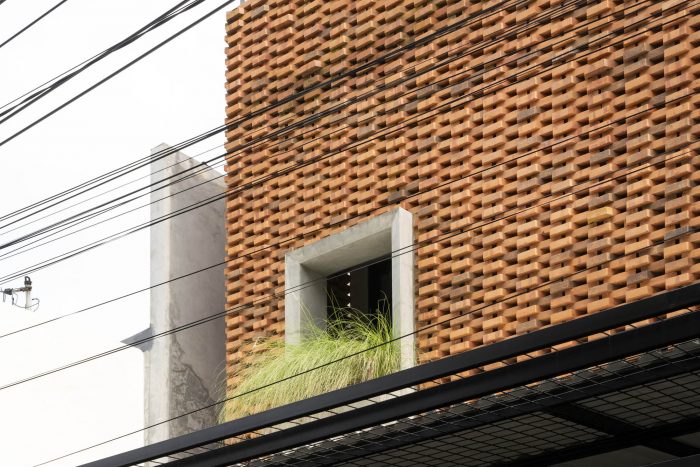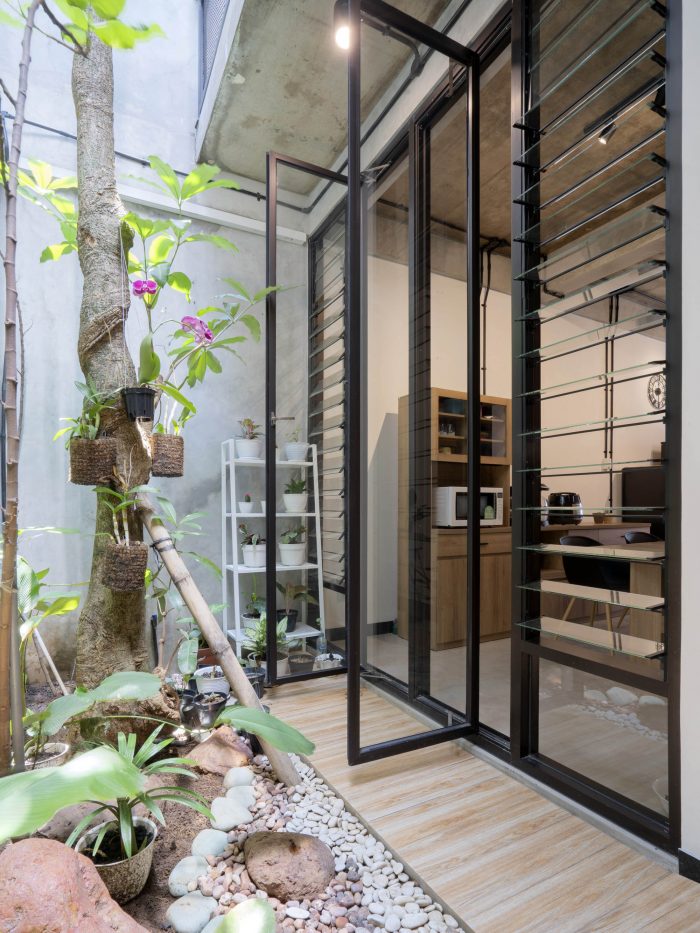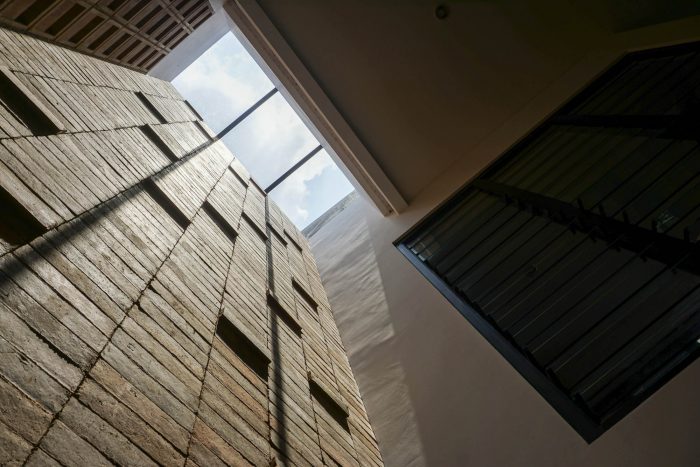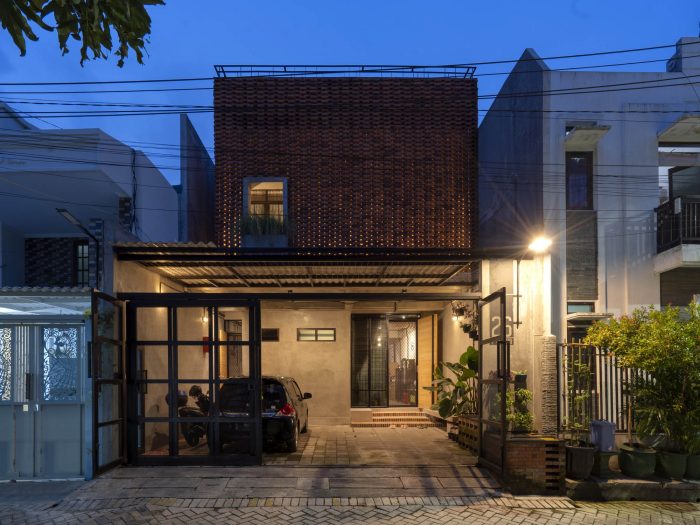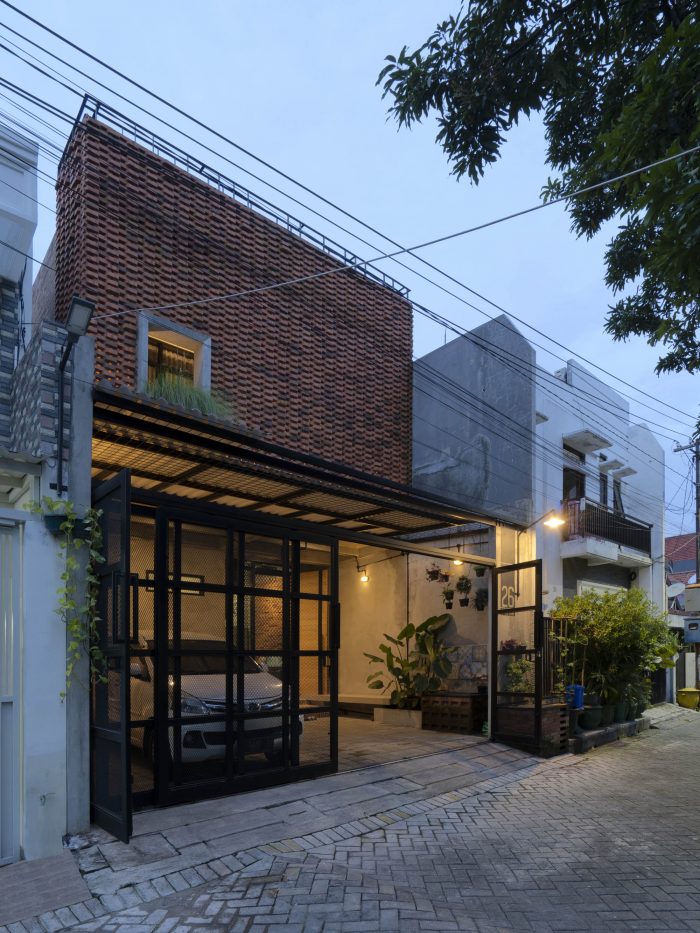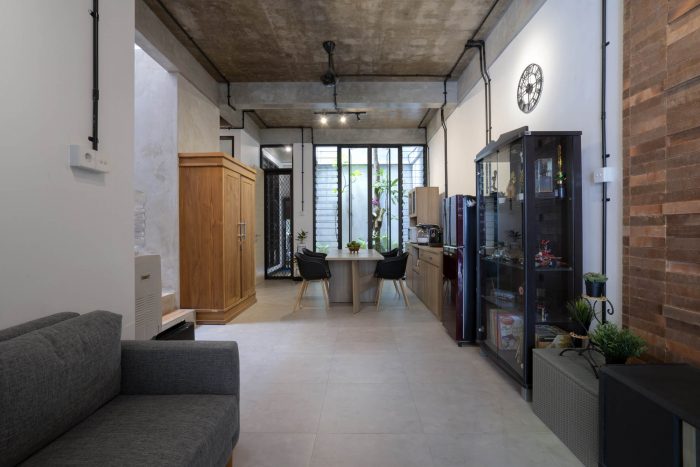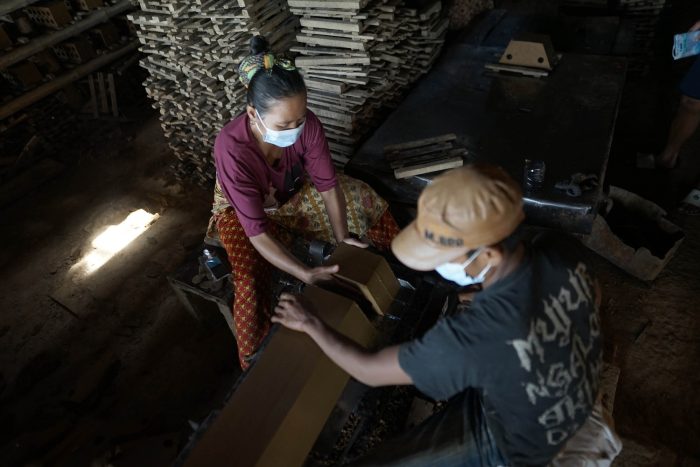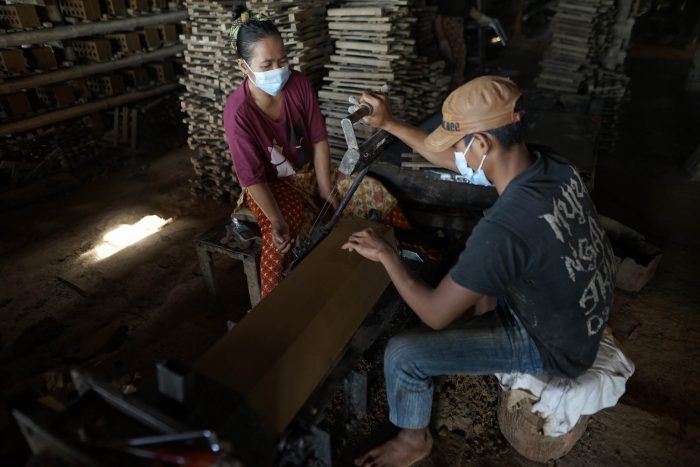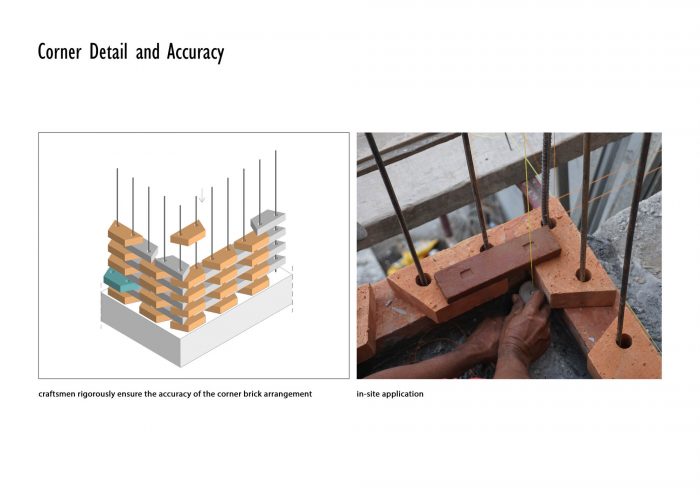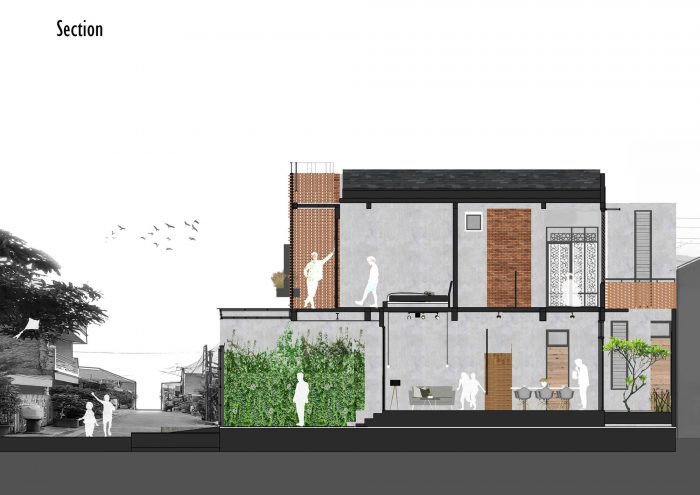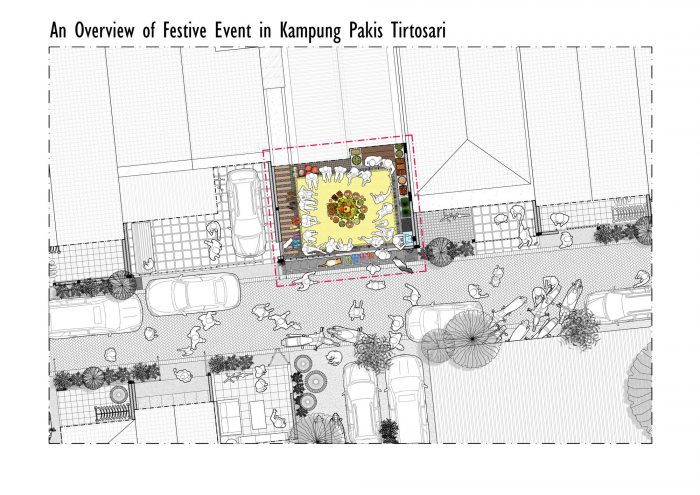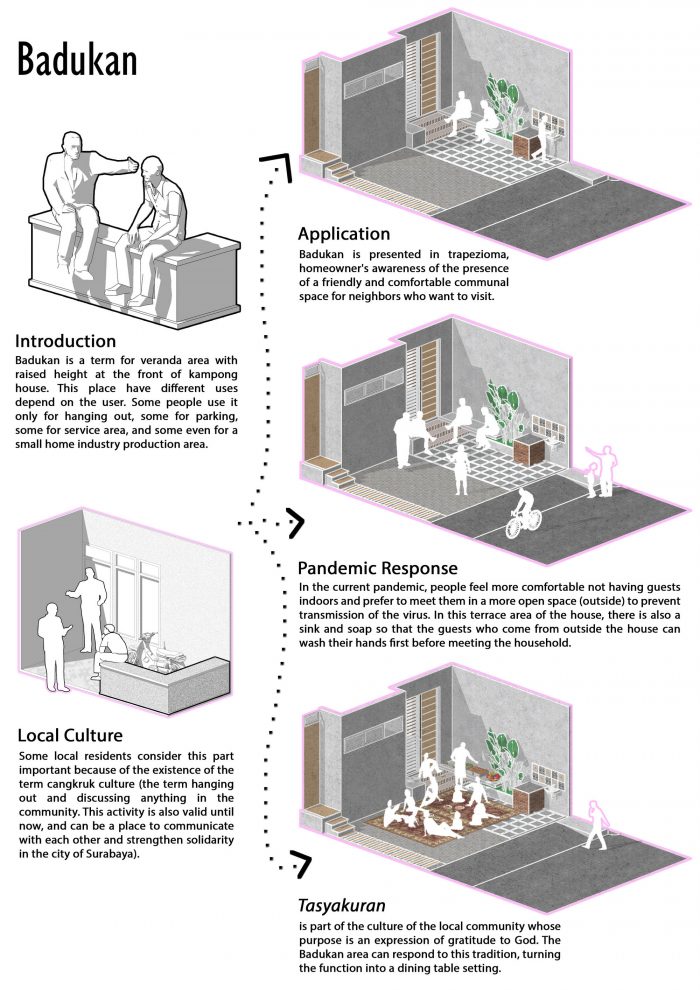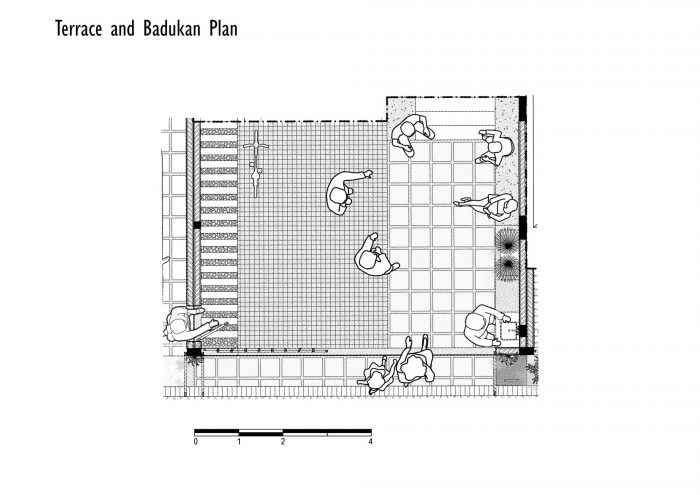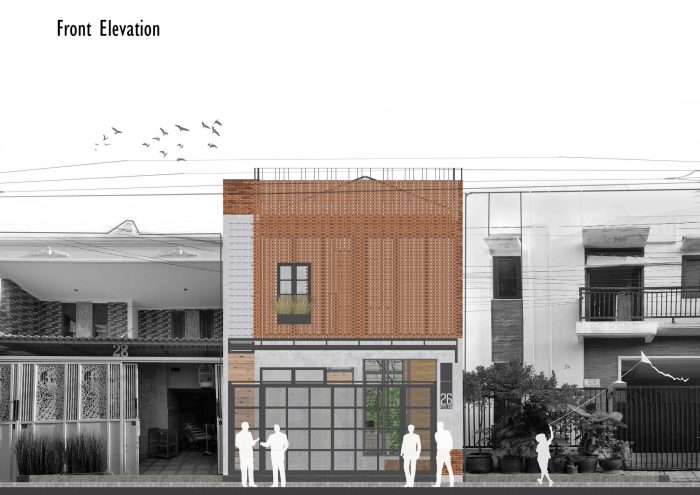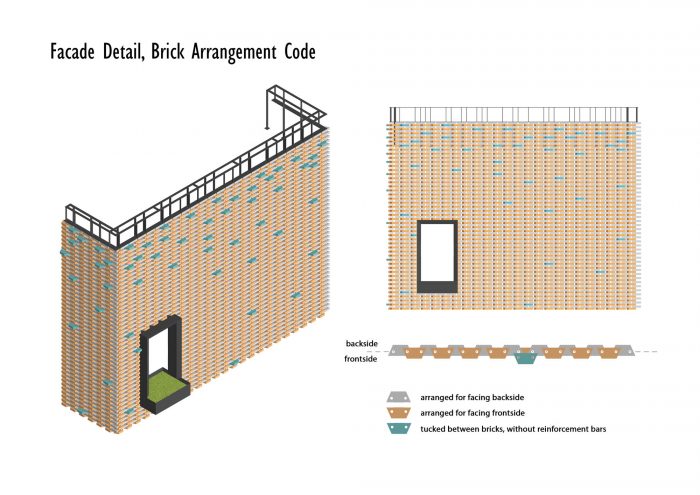公社村 – Trapezioma的位置是在Kampung Pakis Tirtosari,一个仍然存在于印尼东爪哇泗水中间的村庄。站在7X15平方米的面积上,前面的道路只有3.5米宽。与首都雅加达不同的是,在雅加达,大多数村庄已经只剩下名字,而在泗水,有很多村庄至今仍能生存,在这个越来越自私/个人主义的城市中,它们有着友好的邻里生活,基于团结。在相当 “狭窄 “的街道和拥挤的房屋中,社区建立并延续了他们一代又一代的生活。
Communal Village – The location of Trapezioma is in Kampung Pakis Tirtosari, a village that still exists in the middle of Surabaya, East Java, Indonesia. Standing on an area of 7 X 15 m2 with the road in front of it only 3.5 meters wide. Unlike in the capital city of Jakarta, where most of the villages already only have names left, in Surabaya there are many villages that are still able to survive today, with friendly neighborhood life and based on togetherness in the midst of an increasingly selfish / individualistic city. With fairly “narrow” streets and crowded houses, the community have built and continued their lives from generation to generation.
作为omma或ommah(当地语言为:房子),这个房子是邻里/村庄不可分割的一部分,它不是一个完全独立的 “个人房子”。从概念上讲,它是一栋具有双重存在的房子:既是它自己,同时又是这个村子里其他房子的一个单位。
As oma or omah (local language for: house), this house is an inseparable part of the neighborhood/village, it is not a house that stands totally alone as an “individual house”. Conceptually, it is a house that has a double existence: as itself and at the same time as a unit with the other houses in this village.
大流行病问题–由于它位于村子中间,社会条件友好,以团结为基础,因此有可能在入口处建立一个名为 “badhukan”(当地语言为:座位)的公共空间,其形式是一个向前延伸形成L字形的露台地板,在像今天这样的Covid大流行期间,它可以作为一个户外客厅。在目前的大流行中,人们觉得室内没有客人,更愿意在一个比较开阔的空间(室外)会见客人,以防止病毒的传播。在房子的这个阳台区域,还设置了洗手池和肥皂,这样从外面来的客人可以先洗手,然后再见户。
Pandemic Issues – Because of its location in the middle of the village, with social conditions that are friendly and based on togetherness, it becomes possible to create a communal space called badhukan (local language for: seating) located at the entrance door in the form of a terrace floor that is extended forward to form an L-letter, which can be functioned as an outdoor living room during the Covid pandemic like todays. In the current pandemic, people feel more comfortable not having guests indoors and prefer to meet them in a more open space (outside) to prevent transmission of the virus. In this terrace area of the house, there is also a sink and soap so that the guests who come from outside the house can wash their hands first before meeting the household.
此外,位于房子前面的可容纳2辆汽车的车棚,也可用于当地居民的活动,如社区会议、pengajian或《古兰经》诵读等邻里活动。所以,这里真正成为了村子里的一个奥玛,通过为附近居民提供公共空间,成为左邻右舍不可分割的一部分。
In addition, a carport for 2 cars which is located in front of the house can also be used for activities of the local residents’ such as community meetings, pengajian or Qur’an recitation and other activities in the neighborhood. So, this really becomes an omah in the village, an inseparable part of its left and right neighbors by providing communal space for residents in the neighborhood.
梯形砖和透气墙–房子的上层外墙采用梯形砖材料。安迪-拉赫曼建筑师首次将这种 “独特 “的砖块用于这栋房子。这种梯形砖一般不卖,而是定制,是与当地材料工匠合作的结果。这是Andy Rahman建筑师鼓励印尼当地材料工业发展的一次尝试。
Trapezoidal Brick and Breathable Walls – The upper facade of the house is made of trapezoidal brick material. Andy Rahman Architect used this “unique” brick for the first time for this house. This trapezoidal brick is not sold in general, but is made by custom, the result of cooperation with local material craftsmen. This is an attempt by Andy Rahman Architect to encourage the development of the local material industry in Indonesia.
这些砖做成梯形,已经有两个孔,可以插入加强铁。由于砖上已有孔洞,所以,不需要在砖上钻孔,安装成本较低。由于其梯形的形状,与方砖相比,在外墙外观上给人以不同的效果,类似于编竹。这种砖砌外墙的真正原理是gedheg-brick,以前爪哇岛人们的房子里的gedheg,原本是用竹子编织而成的(可以制造出小孔图案以利于通风),以现代的方式呈现出来,变成了带有孔洞的砖块排列(呼吸墙),使空气可以自由地流进房子里。此外,这栋房子的侧面和后面(后院)仍有空间距离,以利于空气流通,最大限度地保证自然采光。这也是热带地区建筑设计在解决当前流行病问题上的一个基本原则。
These bricks are made in the shape of trapezoid and already have two holes to insert the reinforcing irons. The installation costs are cheaper due to the existing holes on the bricks, so, drilling the bricks to make holes is not necessary. Because of its trapezoidal shape, they give a different effect on the appearance of the façade compared to the square bricks, similar to woven bamboo. The real principle of this brick facade is the gedheg-brick, the gedheg that used to be in people’s houses in Java, originally made of woven bamboo (that creates small holes pattern for ventilation), is presented in a contemporary way and is transformed into an arrangement of bricks with holes (breathing walls), so that air can flow freely into the house. In addition, this house still provides spatial distance on the side and the back of the house (backyard) to facilitate air circulation and maximize natural lighting. A basic principle of architectural design in the tropics in addressing the current pandemic issue.
建筑师:Andyrahman Architect
占地面积 : 150 m²
年份:2021年
摄影:Mansyur Hasan
负责建筑师:Martha Asnawi
Ventblock制造商:Jaya Mulya Roster
顾问:Andyrahman Architect
承包商:Graha Karya Architect
城市 : Kecamatan Sawahan
国家:印度尼西亚
Architects: Andyrahman Architect
Area: 150 m²
Year: 2021
Photographs: Mansyur Hasan
Architect In Charge:Martha Asnawi
Ventblock Manufacturers:Jaya Mulya Roster
Consultants:Andyrahman Architect
Contractor:Graha Karya Architect
City:Kecamatan Sawahan
Country:Indonesia

